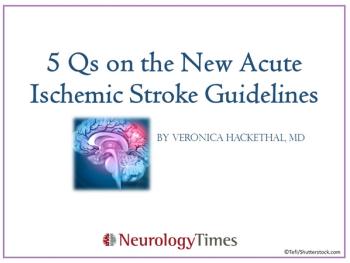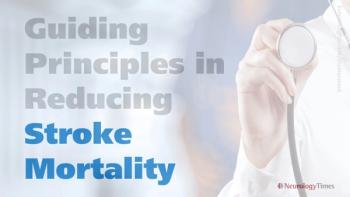
DESERVE is one of the first interventions potentially demonstrating the capacity to decrease racial and ethnic disparities in stroke risk reduction.

DESERVE is one of the first interventions potentially demonstrating the capacity to decrease racial and ethnic disparities in stroke risk reduction.

When should aspirin be given in patients with acute ischemic stroke? Plus 4 other questions to test your knowledge of the new guidelines.

A new analysis of more than a dozen clinical trials has shown no increase in stroke risk for patients with MS, who have shown a higher risk than the general population.

Digital medicine is used to increase access for rural and underserved areas, allowing for the delivery of patient care, patient monitoring and specialist consultations.

Although the differences between groups were not statistically significant, combined findings have shown a risk reduced by close to half.

Stroke survivors with hypertension who are recommended earlier antihypertensive treatment and lifestyle modification may greatly increase their chances of survival.

New research has added to the growing body of research suggesting a wide range of health benefits from light physical activity.

While PES has been debated as a successful therapy for post-stroke dysphagia, recent data has suggested it may be efficacious.

Patients with stroke should receive screening for sleep apnea in the short-term event period, receiving treatment with continuous positive airway pressure.

A 64-year-old man, who has been a smoker for 40 years, presents at urgent care with dizziness, persistent hiccups, and dizziness. What's your diagnosis?

The assistant professor of neurology and neurosurgery spoke about the need to identify LVO in the field, quickly, to improve care.

Neurology News Network for the week of September 15, 2018.

TSC has shown potential to become the first approved therapy for acute stroke, able to be administered in the ambulance.

The co-director of the UPMC’s Center for Endovascular Therapy spoke about the gains that stroke care has made in the last few years.

The dual-therapy regimen will be compared to high-dose tPA monotherapy, the standard of care, in patients with distal blood clots post-stroke.

For ischemic stroke with suspected large-vessel occlusion, regional centralization of care is estimated to result in the best outcomes.

A meta-analysis revealed a history of stroke increases dementia risk by around 70%, and recent strokes more than doubled the risk.

Despite supportive preclinical data, no evidence showed that dextroamphetamine in combination with physiotherapy leads to improvement in post-stroke recovery.

Data suggest that nationally representative readmission metrics be used to benchmark hospital’s performance.

Patients administered A-tDCS during outpatient speech therapy were shown to have a relative increase of 70% in correct-naming for A-tDCS compared to sham.

This is the first study to utilize artificial intelligence for detecting a wide range of acute neurologic events, demonstrating a direct clinical application.

The increased risk of hemorrhage was not revealed in 5-mg and 10-mg doses, implying a dose-dependent effect for rivaroxaban.

Findings from STROKE 2018 revealed sICH was more likely with right hemispheric patients post-alteplase infusion.

This guideline gives recommendations to improve diagnosis, health outcomes and care of individuals with prolonged disorders of consciousness.

Hospitals participating in the Get With The Guidelines-Stroke program provided patients with more evidence-based interventions but highlighted a gap in intervening practices.